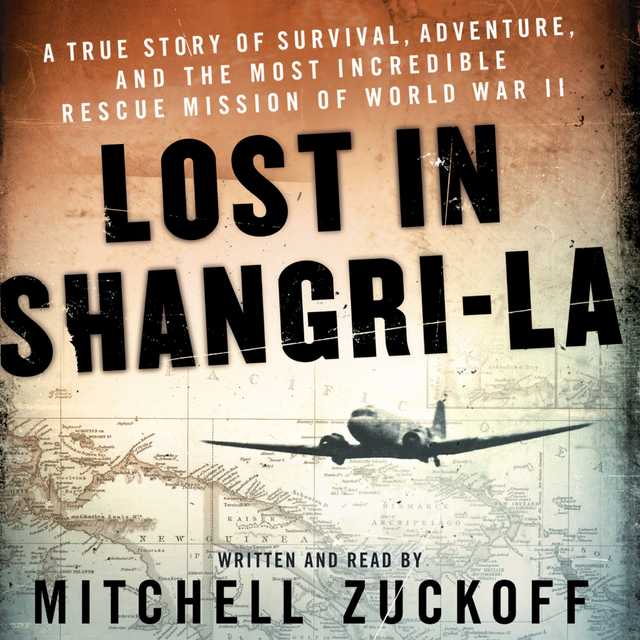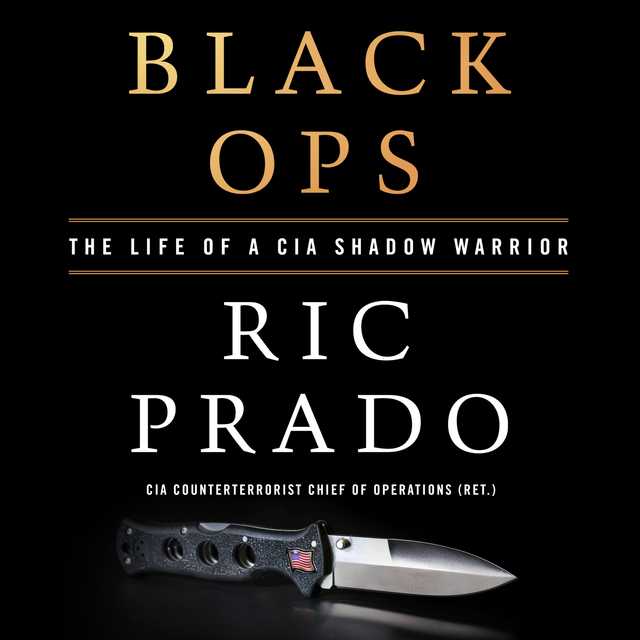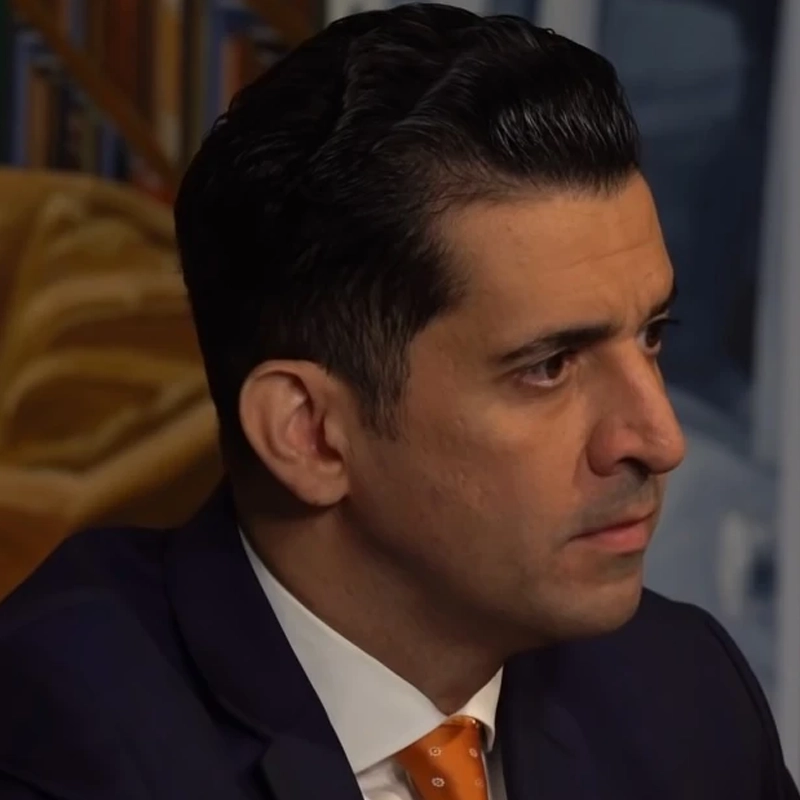Lost in Shangri-La Audiobook Summary
“A lost world, man-eating tribesmen, lush andimpenetrable jungles, stranded American fliers (one of them a dame withgreat gams, for heaven’s sake), a startling rescue mission. . . . This is atrue story made in heaven for a writer as talented as Mitchell Zuckoff. Whew–what an utterly compelling and deeplysatisfying read!” –Simon Winchester, author of Atlantic
Award-winning former Boston Globe reporter Mitchell Zuckoffunleashes the exhilarating, untold story of an extraordinary World War IIrescue mission, where a plane crash in the South Pacific plunged a trio of U.S.military personnel into a land that time forgot. Fans of Hampton Sides’ Ghost Soldiers, Marcus Luttrell’s Lone Survivor, and David Grann’s The Lost Cityof Z will be captivated by Zuckoff’s masterfullyrecounted, all-true story of danger, daring, determination, and discovery injungle-clad New Guinea during the final days of WWII.
Other Top Audiobooks
Lost in Shangri-La Audiobook Narrator
Mitchell Zuckoff is the narrator of Lost in Shangri-La audiobook that was written by Mitchell Zuckoff
Mitchell Zuckoff is the Sumner M. Redstone Professor of Narrative Studies at Boston University. He covered 9/11 for the Boston Globe and wrote the lead news story on the day of the attacks. Zuckoff is the author of seven previous works of nonfiction, including the number one New York Times bestseller 13 Hours: The Inside Account of What Really Happened in Benghazi, which became the basis of the Paramount Pictures movie of the same name. His earlier books also include the New York Times bestsellers Lost in Shangri-La and Frozen in Time. As a member of the Boston Globe Spotlight Team, he was a finalist for the Pulitzer Prize in investigative reporting and the winner of numerous national awards. He lives outside Boston.
About the Author(s) of Lost in Shangri-La
Mitchell Zuckoff is the author of Lost in Shangri-La
More From the Same
- Author : Mitchell Zuckoff
- Ponzi’s Scheme
- 13 Hours
- The Secret Gate
- 13 Hours
- 13 Hours
- Publisher : HarperAudio
- Abraham
- American Gods [TV Tie-In]
- Dead Ringer
- House of Sand and Fog
- Prey
Lost in Shangri-La Full Details
| Narrator | Mitchell Zuckoff |
| Length | 8 hours 32 minutes |
| Author | Mitchell Zuckoff |
| Publisher | HarperAudio |
| Release date | April 26, 2011 |
| ISBN | 9780062072801 |
Additional info
The publisher of the Lost in Shangri-La is HarperAudio. The imprint is HarperAudio. It is supplied by HarperAudio. The ISBN-13 is 9780062072801.
Global Availability
This book is only available in the United States.
Goodreads Reviews
Will
April 27, 2022
Mitchell Zuckoff in Papua New Guinea, next to the wreckage of the Gremlin Special - image from BU Today - photo by Buzz Maxey I bet you watched at least some TV coverage of the rescue of Chilean miners in 2010. The whole world did. In 1945 there was comparable interest in a remarkable rescue. People followed the search and then the rescue attempts for weeks. But a few small events, like the first use of nuclear weapons and the subsequent end of the war, pushed the story out of the public eye. While researching another project, Mitchell Zuckoff happened across this story, actually located one of the survivors, and has rescued this gripping tale from an undeserved oblivion. In the waning days of World War II, an Army C-47 transport plane takes off from Base G in the town of Hollandia, on the north coast of New Guinea. Aboard is a collection of military personnel, male and female, flying over the island to get a look-see at a remote, newly-discovered but ancient civilization, tucked away between mist-covered mountains and guarded by hundreds of square miles of impenetrable jungle. They call this newly discovered place Shangri-La in honor of the fictional utopia of James Hilton’s Lost Horizon. These excursions are a regular treat. Twenty-four people are on the trip flying in the ill-named Gremlin Special. When it crashes in the jungle only three survive.Known to the Gremlin Special survivors as "Pete," a leader of the village of Uwambo. He was the first native to literally extend a hand of greeting to Margaret Hastings, Kenneth Decker and John McCollom - Image and text from Zuckoff's site1945 New Guinea is home to a wide range of unpleasant biting creatures and a cornucopia of microscopic bad boys that would make a biologist sing, but might present a challenge to crash survivors, particularly when piled atop the burden of serious injuries. It is a huge island, second largest on Earth, and in addition to its other selling points, it is inhabited by tribes of cannibals still living with Stone Age technology, and, just for fun, thousands of well-camouflaged Japanese soldiers, recently driven inland from the coast. Have a nice day. The personalities read like a Hollywood dream come true. The group includes a beautiful, but tough as nails, damsel-in-distress, a courageous Lieutenant who has to overcome his grief at the loss of his brother and rise to the occasion in order to keep himself and his people alive, a studly, gung-ho paratrooper eager to prove his mettle and recover the survivors, a drunken, disgraced Hollywood film-maker trying to recover his career, daring and chipper Filipino medics and paratroopers, and, of course, a tribe or two of local cannibals, who have discovered fire, but have not yet made it up to the wheel. This is just a fun, fun book to read. Zuckoff does a very good job of giving us a feel for the players here. He spoke to as many as possible, including the Stone Agers. You can feel yourself rooting for this one or that one, and controlling an urge to break out into a few bars of “Bloody Mary.” I particularly enjoyed Zuckoff’s descriptions of the Westerners’ interactions with the natives.Of course we know something about who gets out because the author quotes them to us early on, and he makes no claims to clairvoyance. But there are still plenty of details to be found out. While we know about some of the survivors, we do not know what shape they were in when they got out. There was a harrowing race underway between gangrene and time. It took daring and considerable envelope-pushing to bring ‘em back alive. How they accomplish that seems amazing, even now. There are a few fun facts here as well, such as the derivation of the term “Walkie-talkie.”But just in case you might think this is merely an entertaining, fast, breezy read, there is sub-text that gives one poi for thought. Are the Stone-Agers any different from contemporary people? Are the perpetual wars that the ancient headhunters fight with spears and arrows really so different from the ones fought with guns and atom bombs? Is human nature so determined? Religion enters as well. The native culture tells of spirits from the sky. It sounded like time-travelers or aliens to me, but it does raise a question of people’s need for something to believe in, whether that belief is held by primitives living in remote jungles, or sophisticates living in modern cities. If you can find your way to the bookstore, there is no doubt that you will lose yourself in Lost in Shangri-La. You will not want to leave. =============================EXTRA STUFFZuckoff's later book, Frozen in Time, another lost/rescue book, is also worth a look.The mystery of one of the most famous missing persons has been solved. The features a piece on what actually happened to Michael Rockefeller
Jeffrey
January 05, 2019
"The cabin crumbled forward toward the cockpit. The walls of the fuselage collapsed as though sucked inward. Both wings ripped away. The tail section snapped off like a balsa-wood toy. Flames shot through the wreckage. Small explosions rang out like gunshots. Black smoke choked off the light. The air grew bitter with the stench of burning metal, burning leather, burning rubber, burning wires, burning oil, burning cloths, burning hair, burning flesh."It wasn't easy getting a seat on the Gremlin Special to fly over this mystical valley they'd heard such intriguing reports about. It was a good mix of young men and women who were excited about the prospect of joining a select group of people who have been allowed to see Shangri-La. The more experienced pilot was back in the cabin area probably answering questions and flirting with the pretty girls. One of the women had taken the pilot's seat up front to enjoy the view. When the co-pilot experiences trouble the plane hits the side of the mountain before anyone can even react. Out of the twenty-four people on board three survive. Thus begins a tale of survival and the search to find them. A world weary of war news starting following the news articles about the search with avid attention. The military quickly realized this was an opportunity for wonderful PR and blessed their lucky stars that one of the survivors just happened to be a beautiful young WAC named Margaret Hastings. Margaret Hastings To add to the poignancy of the story one of the survivors John McCollom lost his twin brother Robert in the crash. The world wanted these people brought back safely. Little was known of the tribesmen that inhabited this valley. They had been relatively "untainted" by civilization. They still used bows and arrows and stone axes. They had not invented the wheel, but did understand and use fire. They didn't really have any organized religion, but did fear the spirits of their ancestors. To appease these spirits they would cut off the digits of a female family member. It was not unusual for a woman by the time she reached adulthood to have nubs for fingers on her right hand. Luckily for the survivors the tribes people did not see them as a threat, but merely as a curiosity. Margaret did have to keep track of her hands as the tribes people did attempt to help her grieve for her fallen companions by hacking off a few of her digits. Tribesman sporting his penis gourd "They are wonderful carefree people. Living in a land of perpetual summer, they never worry about their next meal."The army sends in Filipino paratroopers lead by Captain C. Earl Walter Jr. to find the survivors. It is a tricky jump, with a thick jungle canopy, the green only broken by bone breaking rock structures. To make the jump even more hazardous they had to come out of the plane at a very low altitude with chutes deployed. If something went wrong they would have no time to deploy a reserve chute. The survivors did not escape unscathed. Hastings has deep burns on her legs. Decker has a shattered elbow, a deep slice to his head, and badly burned buttocks. McCollom fortunately only sustained a broken rib. Gangrene has started to set into their wounds and when the Filipino medics arrived they felt some hope that they might survive their wounds. Margaret Hastings with her Filipino Medics Corporal Camilo "Rammy" Ramirez and Sergeant Benjamin "Doc" BulataoI'm not going to be a spoiler. You will have to read the book to find out how the military final figures out how to bring them out of that valley. One thing about Americans we are an ingenious bunch. We sometimes put lives on the line to save the few, but for the people lost in that valley they had no doubts that their friends would be coming for them. Zuckoff loads the book with old photographs. (I love old photographs.)What I knew about Papua New Guinea wouldn't have filled up a thimble, but now I know for instance that it is the second largest island in the world after Greenland. Bring on Trivia Pursuit. Decker, Hastings, and McCollomIf you wish to see more of my most recent book and movie reviews, visit http://www.jeffreykeeten.comI also have a Facebook blogger page at:https://www.facebook.com/JeffreyKeeten
Jessaka
October 19, 2018
If you like pork and sweet potatoes maybe you would have liked living among the New Guinea natives back in the 30s or 40s, or if you liked tropical jungles that look like paradise, you may love living in one, but you would also have to worry about jungle rot, malaria, elephantiasis, and dengue fever just to mention a few. I rather wished that I lived in the jungle, but a tame one without jungle rot…Well, the first chapter put me in a deep funk, which was totally unexpected. All I knew about the story was that in May of 1945, twenty-four army men and women, who were stationed on the beach of New Guinea, wanted to take a pleasure trip over the island. Their plane crashed and only three survived. Actually two others had survived for a while.This true story began by introducing us to the lives of the people onboard that plane. Margaret Hastings was one of the women. As I read the brief story of her life up until then, I thought of my sister who grew up in the 30s, 40s, and 50s, and I thought of how Margaret’s life was like hers but had been cut short. That was when I felt a deep sadness of a young life being cut short. Then I learned that Margaret was okay. She was one of the three survivors.Margaret “grew up in Owego and bicycled to the local swimming hole, hitchhiked when she wanted to explore beyond the village, did well in school, and read books.” Well, now that I think of it, I explored while bike riding and read books, not my sister.Margaret also dated a young soldier and spent time with him on the beach, and that is when I actually thought of my sister, her dating soldiers from Camp Roberts, going to the beach but having to take me and my sister along with her because she was our babysitter. Like Margaret’s swimming hole, my sister used to take us out to someone’s ranch and we all sneaked into their hot spring pool during the night.When Margaret survived the plane crash her legs were severely burned, so she feared losing them. The other four were not doing well either. Gangrene. Severe injuries. And I will leave it up to others to read the book because from that moment on their life in the jungle became precarious but exciting to me because I love survival stories.The natives finally found and took them in, but that came with a great price to those natives, as it always does. They had a legend called Uluayek. “It told of spirits that lived in the sky over the valley, and of a vine that hung down to the ground. Long ago, according to the Uluayek legend, the valley people and the sky spirits climbed up and down the vine to visit one another. Some said that the sky spirits had long hair and light skin and eyes. Some said that they had hairy arms they kept covered. No one knew for sure, because the spirits had stolen pigs and women, and the people of the valley had cut the vine, ending contract. The Uluayek legend claimed that one day the sky spirits would replace the vine and climb down again. The spirits’ return would herald the End of Days.”Their way of life had ended for soon the light skinned people came and mined for gold and copper, and then the loggers came to cut down their trees. Even the missionaries came because they believed that the natives needed Christ and morals. Now, today, the natives have AIDs and are hungry and living in poverty. Elderly natives walk down the streets begging for change and cigarettes and pose for photos. The natives “look lost.”
Carolyn
October 05, 2019
"Lost in Shangri-La: A True Story of Survival, Adventure, and the Most Incredible Rescue Mission of World War II","Mitchell Zuckoff". A great, true, little known adventure and rescue story which occurred during the closing days of WW2. The detail and meticulous research more than 60 years later is amazing, as were the photos, diaries and war records the author was able to gather. He even interviewed some of the natives who were still alive, and witnessed what happened, and had never seen a white person before, thinking they were gods. Having hiked in the area and slept in native huts, I tried to be impartial in my rating. The story takes place in 1945 when the war in the Pacific is nearing an end. The setting is in what was Dutch New Guinea where some USA military were stationed. While flying over mountainous, unknown region, an officer was astounded to view a large valley nestled between the ranges which was not marked on any maps. Below him he saw neat, fenced villages with sophisticated, terraced vegetable gardens with irrigation, where about 100,000 stone-aged tribal people lived. No landings were made because it seemed impossible to find area for landing strip, danger from the invading Japanese army, and the natives were thought to be savage cannibals and head-hunters. The army started conducting sight-seeing tours to see this uncharted, amazing sight from the air. Unknown to them in 1945, the place they called Shangri-La (now known as the Baliem valley)had been sighted by plane in 1938 followed by an expedition, but still most natives had never seen a white man or woman. A plane with 24 military passengers took off on what was supposed to be a 3 hour sight-seeing tour. The passengers included 9 military women (WAC's). It crashed in the mountains and only 3 people survived. These were a young army lieutenant whose identical twin brother died in the crash, a pretty WAC officer with badly burned feet and legs, and a sergeant with terrible head injuries and burns. The later two soon developed gangrene in their injuries. They had no food, water, or medical supplies and were stranded among what were believed to be head-hunting savages. It seemed like an impossible rescue task. A team of brave Filipino-American paratroopers, including 2 medics volunteered to parachute in, knowing they would be outnumbered over 1000 to 1 by the natives, and might encounter Japanese military. Also food and other necessities were dropped from planes. A colourful cast of characters included military officers trying to figure out the seemingly impossible rescue task as weeks went by, war correspondents, and newspaper reporters, and a drunken film-maker who had been a Hollywood actor until he became a jewel thief. I found this to be a very impressive, non-fiction book. How they were rescued remains incredible,genius but true.
Elyse
July 26, 2012
Grab some "Color-by-color" hard candies (reds, greens, yellows, and so on), start sucking and start reading this book! Wow--What an adventure ride. My GOD!!! I thought I was waiting to read this book WHY???I KNEW I wanted to read this book (the first week it was released when I just happened to be in Barnes and Noble and discover it myself 'before' hearing others talk about it)....Why did I wait?I had just read "Unbroken" by Laura HillenbrandI also read..."Even Silence Has An End" by Ingrid BetancourtI read "Half the Sky" by Nicholas D. Kristof and Sherly WuDunn --I've read Holocaust stories (on and off for years) --- (I'm Jewish) --I had read other wonderful Historical fiction books ---Last being "The Sandcastle Girls"...(another 5 star book) -- which is 'the book' which finally got me to 'open' THIS book! (ok, I allowed myself 'one' day of LIGHT' summer trashy reading first...lolOnce I picked Mitchell Zuckoff's book to read --I no longer felt 'guilty' --I only had pure authentic desire to get my hands on it! I was ready! I admit--I never thought it would be THIS good. (important yes....but THIS GREAT???) ----could'n't be both! IT was: Important AND GREAT!!!This story is sooooooooooooooooo damn engaging ---I could not stop reading. (I tried --but couldn't). My poor husband---(he had to make his own dinner last night). I was fine to just "suck-on-some-candy" and keep reading! I love this quote on page 236 by Margaret Hastings: "The term 'savages' hardly applied to such kind, friendly and hospital men as these natives. We could never understand each other's language. But we could always understand each other's hearts and intentions. The greatest miracle that befell McCollom, Decker and me, aside from our escape from death in the crash, was the fact the natives were good and gentle people. Amazing Story!!! .........And....Amazing Author for an outstanding well-written book! note: Authors make a huge difference in the world! BIG TIME --(contributing to many people's lives)>>> They sure do for me!
Alex
July 16, 2018
A plane crashes in WWII New Guinea, and this nonfiction book chronicles the increasingly ludicrous efforts to get them out of the hidden cannibal-infested mountain valley they landed in. It has basically nothing to do with James Hilton's Lost Horizon, the book that invented "Shangri-La"; that place was in Tibet. But with a story this terrific, all a writer has to do is stay out of its way. Zuckoff almost pulls that off...but he can't quite get his boner out of it.Because he can't at all hide his crush on pretty survivor Margaret Hastings, which zooms from zero to creep city faster than a plane zooms into a mountain. Let me set the scene for this passage I'm about to quote: Hastings has just stumbled out of the plane wreck. She's terribly burned all over her body, in grave danger for her life, in unknown country, and surrounded by corpses so mangled they'll never be sorted out. Here's what happens next:Margaret pulled off her khaki shirt. After that came her cotton bra. For a moment she was as topless as the native women she'd hoped to see...[then she takes the rest of her clothes off and it goes on for most of a page]...Margaret pulled her pants back on over her naked bottom. She intended to use the panties' silky fabric to make bandages for herself and the other survivors.Zuckoff will bring up Margaret's panties about every other page for the rest of the book. She doesn't even use them as bandages, btw, that doesn't come up again. But her general panty status - does she have underwear on? [No.] How much underwear does she have? [None.] Is new underwear forthcoming? [It is not.] What color would her underwear be, if she had any? [Brown. The army has forbidden white panties because, hanging on a clothesline, they could attract an enemy.] This is a terrific book for people interested in true adventure and survivor stories, or WWII-era ladies' underwear. As a bonus it comes with lots of pictures - the survivors actually documented their experience as it happened, which is amazing - but for some reason they neglected to document the whole underwear situation.
Jamie
April 30, 2019
Some stories capture the world’s attention for a few days, then fade into obscurity. Who remembers Baby Jessica, who fell down a well in 1987? How long will it take for the story of the boys trapped in that cave in Thailand to become a trivia question (how many boys, and how long were they in there?) In 1945 papers and newsreels breathlessly covered a story of tragedy, courage, and endurance, including brave paratroopers, a daring rescue, and a plucky heroine with great legs. People couldn’t get enough of it.One of John Milton’s most memorable lines is, “They also serve who only stand and wait.” The men and women who managed the massive logistical support systems that sustained operations in World War II did essential work but were rarely recognized for their efforts, which involved a lot more than just standing around. It was hard work under primitive conditions, and at the base in Hollandia, New Guinea, only recently captured from the Japanese, it was performed with the knowledge that thousands of enemy soldiers were still out in there in the jungle.Recreational activities were few, but occasionally something would come up. Sightseeing flights were popular, but since it was against regulations to use aircraft this way, they were usually called training missions. One popular destination for these flights was a remote valley surrounded by high mountains, discovered just a few years before the war. It was forty miles long and eight wide, with an estimated population of up to 120,000, stone-age people rumored to be cannibals. The flights would swoop into the valley to get a look at the people and their villages, everyone would have a good time, and then it was back to winning the war.On May 13, 1945 tragedy struck when a C-47 cargo plane carrying twenty-four people crashed into one of the mountains surrounding the valley. There were only three survivors, each of them injured. Their first task was to struggle down the steep slopes of the mountain to reach the open plain so that they had a chance to be seen by rescuers. After a harrowing descent they finally made it, and found the natives to be friendly and helpful.They were soon spotted by search planes, but the valley had no place a plane could land, so a large scale rescue operation was begun. An officer and two medics, members of a paratroop unit, were dropped, and were able to stop the gangrene which was starting to spread in the survivors’ wounds.At this time in May 1945 the war in Europe had just ended and the dull fog of occupation and repatriation was beginning, while in the Pacific the fighting on Okinawa had been going on for six brutal weeks, with appalling casualties. None of this would provide the kind of uplifting human interest stories that sold newspapers, so the New Guinea rescue operation was just what they were looking for, and readers were given a constant stream of updates and breaking news, much of it apparently manufactured by writers in New York and Chicago.When the valley had first been discovered before the war, a seaplane was used to get in and out with no problems, but the Army didn’t know about that, and decided it was not a workable option. As they looked for another solution and the press’s demands for more information mounted, they decided to allow a filmmaker to parachute in to record the situation. He had never jumped out of a plane in his life, and needed to be well fortified with alcohol to do it, but he managed to land safely.The final plan involved a dangerous contraption to snatch the survivors off the ground one by one and reel them into an aircraft flying overhead. It was a harebrained idea, but somehow it worked, and everyone made it out safely.The villagers’ isolation did not last long. They were soon introduced to the modern world and its alcohol, tobacco, exploitation, and a consumerist society they were unprepared for. Civilization had arrived, and as in so many other places, the results were not pretty.This is an offbeat story, interesting in its details but with no larger significance for the war. The writing is good, and the author researched every aspect of the rescue and the people involved in it. The war was not just combat, and not everyone who served had a glamorous job. Some of them only wanted to do what had to be done and then get home to their families. The people involved in this story were clerks and secretaries and transport pilots for the most part, and even the paratroopers saw no combat action, so the book is also a look at the people who played supporting roles in the grand drama of the war.
George
November 21, 2021
Takes place during WW2 but is not really a war book. It's a good read about the search for a lost airplane in a remote valley in Papua New Guinea. The challenges of this remote landscape humbled every invading army. Essentially, this is a search and rescue story with a fascinating backdrop. It's a rescue mission in a remote and challenging jungle, with a World War in the distance.
Most Popular Audiobooks
Frequently asked questions
Listening to audiobooks not only easy, it is also very convenient. You can listen to audiobooks on almost every device. From your laptop to your smart phone or even a smart speaker like Apple HomePod or even Alexa. Here’s how you can get started listening to audiobooks.
- 1. Download your favorite audiobook app such as Speechify.
- 2. Sign up for an account.
- 3. Browse the library for the best audiobooks and select the first one for free
- 4. Download the audiobook file to your device
- 5. Open the Speechify audiobook app and select the audiobook you want to listen to.
- 6. Adjust the playback speed and other settings to your preference.
- 7. Press play and enjoy!
While you can listen to the bestsellers on almost any device, and preferences may vary, generally smart phones are offer the most convenience factor. You could be working out, grocery shopping, or even watching your dog in the dog park on a Saturday morning.
However, most audiobook apps work across multiple devices so you can pick up that riveting new Stephen King book you started at the dog park, back on your laptop when you get back home.
Speechify is one of the best apps for audiobooks. The pricing structure is the most competitive in the market and the app is easy to use. It features the best sellers and award winning authors. Listen to your favorite books or discover new ones and listen to real voice actors read to you. Getting started is easy, the first book is free.
Research showcasing the brain health benefits of reading on a regular basis is wide-ranging and undeniable. However, research comparing the benefits of reading vs listening is much more sparse. According to professor of psychology and author Dr. Kristen Willeumier, though, there is good reason to believe that the reading experience provided by audiobooks offers many of the same brain benefits as reading a physical book.
Audiobooks are recordings of books that are read aloud by a professional voice actor. The recordings are typically available for purchase and download in digital formats such as MP3, WMA, or AAC. They can also be streamed from online services like Speechify, Audible, AppleBooks, or Spotify.
You simply download the app onto your smart phone, create your account, and in Speechify, you can choose your first book, from our vast library of best-sellers and classics, to read for free.
Audiobooks, like real books can add up over time. Here’s where you can listen to audiobooks for free. Speechify let’s you read your first best seller for free. Apart from that, we have a vast selection of free audiobooks that you can enjoy. Get the same rich experience no matter if the book was free or not.
It depends. Yes, there are free audiobooks and paid audiobooks. Speechify offers a blend of both!
It varies. The easiest way depends on a few things. The app and service you use, which device, and platform. Speechify is the easiest way to listen to audiobooks. Downloading the app is quick. It is not a large app and does not eat up space on your iPhone or Android device.
Listening to audiobooks on your smart phone, with Speechify, is the easiest way to listen to audiobooks.






























